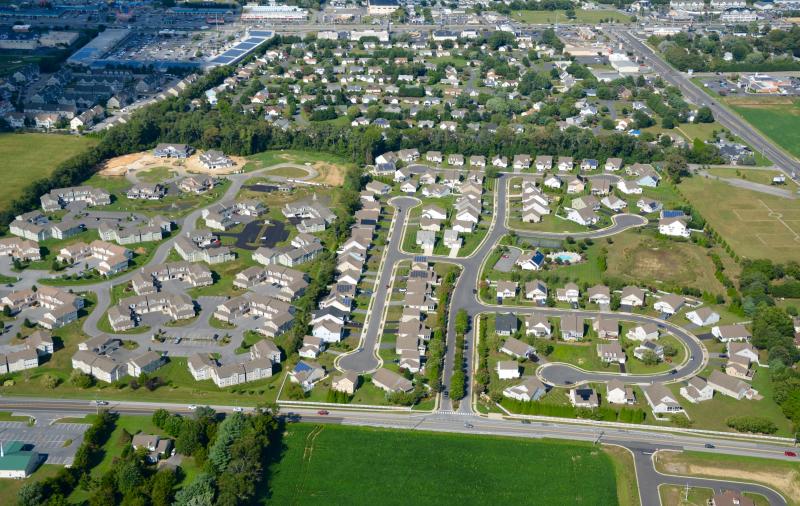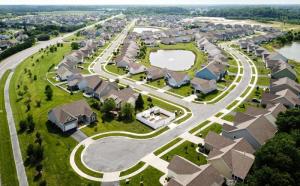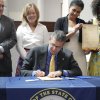Density calculation a hot topic in Sussex
As with proposed changes to the forested and wetland buffers ordinances, Sussex County officials are getting pushback on a proposed change to how subdivision density is calculated.
During a Sept. 13 public hearing, planning and zoning commissioners heard impassioned pleas to gain input from stakeholders before taking action.
Under the proposed ordinance, developers would no longer be permitted to count wetlands in density calculation. Under current regulations, density is calculated using the total parcel acreage, including wetlands even though they can't be built on.
Sprawl and equity were among major issues raised by opponents.
Georgetown farmer James Baxter IV said land equity is the main issue. He said he borrows money against his land to maintain his farm. “If you take away that equity, you take away the reason to hold on to land,” he told the commission.
He displayed a map showing a section of his farm that contained about 50 percent wetlands. He said the land value goes from $7,500 an acre to zero dollars an acre.
Commission Chairman Bob Wheatley said Baxter's testimony was compelling. “We need to hear from more Mr. Baxter,” he said. “The equity issue is not so they can maximize the land price to sell it for development, it's so that they can use that resource to finance their farming activities, and that's the thing that bothers me. It's a very compelling argument.”
At the end of the hearing, the commission voted to keep the record open and continue the hearing at its Thursday, Sept. 27 meeting.
Delaware Center for the Inland Bays Executive Director Chris Bason said the proposed ordinance is consistent with the comprehensive management plan for the bays, which Sussex County officials endorsed. “It would prevent concentration of density near ecologically sensitive wetlands and waterways such as the Inland Bays, which would help reduce flooding,” he said.
He said the bays are in poor health as the rate of marsh growth declines, down more than 30 percent since 1938. Bason said a recent environmental report card gave the Inland Bays a D+. Sussex County Planning and Zoning Director Janelle Cornwell said her office has received eight letters in support of the ordinance.
A question of value?
Several who spoke against the ordinance said it would force developers to purchase more land and lead to sprawl. “Reduction in density is the only effect you would get because wetlands are already preserved,” said Frank Kea, CEO of Solutions IPEM in Georgetown. “What you will get is sprawl with longer pipes, longer cables, longer streets and longer trips. Spreading people out leads to longer trips and traffic gets worse.”
Dave Carey, a Lewes-area farmer, said developers will not pay for something they can't use. “It means more property will be developed and sprawl will be the result,” he said.
He said some parcels have wetlands and others do not. “Is one size fits all fair to all property owners? I don't think so,” he said.
Jim McCulley, president of the Home Builders Association of Delaware, said, “If you take wetlands out of the density calculation, you've essentially taken all of the value of those areas away and given an incentive to landowners to minimize, reduce or eliminate those areas.”
He suggested council seek out ways to add value – not reduce it – to wetlands. “Adding increased density to the rest of the property as a bonus incentive would save these sensitive areas,” he said.
Ring Lardner, representing the Delaware Chapter of the American Council of Engineering Companies, said more acreage will be needed to meet the housing demand. “Eventually, the number of developments will sprawl outside of the growth areas without infrastructure to support growth,” he said.
Bob Thornton, state director for the Home Builders Association, said the national association has reviewed the proposal. “Their land-use attorneys said you are headed for a takings case,” he said, adding passage of the ordinance would put the brakes on the building industry, key to the county's economic engine.
“Billions of dollars would be wiped out overnight if this ordinance would pass,” he said.
He suggested officials take a longer look at the issue. “Bring in some experts. Don't go on a whim and devalue everyone's property by 30 percent because it makes us feel better and stops development,” he said.
Laurel farmer and businessman Bobby Horsey asked the commission why changes were proposed. “Because of a few individuals who have moved here and want to stop our growth?” he asked. “Let the market dictate what we put on our property. This is a violation of our property rights.”
Former commissioner offers advice
Mike Johnson of Georgetown, who served for 11 years on the planning and zoning commission, said the county has grappled with density issues for years. He said he has watched as developers use wetlands in creative ways to gain more density.
Johnson said it's not right to use wetlands in density calculations. “It's a very real concern,” he said.
He suggested a middle ground to placate landowners could be to establish a percentage of wetlands used in the density calculation.
Robert Murphy of Lewes said he supported the ordinance. “You have to look to the future and look at smart growth,” he said.
County council will have a public hearing on the proposed ordinance at 10:30 a.m., Tuesday, Oct. 9, in the county administration building, 2 The Circle, Georgetown.
















































